This is our third visit to Kitt Peak, and this time we brought our friends, Liz and Mike, with us. Located on a mountaintop on the Tohono O’Odham Nation, it is the National Observatory of the United States and has the largest collection of telescopes in the world (27). The site was carefully selected (from 150 potential locations) due to the incredibly clear night sky here.
Views of the Quinlan Mountains and Sonora Desert below are stunning on the drive to the peak. Many telescopes came into view as we neared the top.
The sign on the mountaintop identity the many universities and associations affiliated with the site. The telescope next to the Visitor Center is used for the Nighttime Stargazing Programs offered here (reservations required).
Be sure to check out the mosaic in the courtyard next to the Visitor Center. It has many symbols of the Mayan civilization including Caracol, the observatory at Chichen Itza (which I visited with Amanda in 2009).
We began our visit by checking out the Visitor Center exhibits and a gift shop (lots of unique gifts).
A map of the grounds is provided at the Visitor Center. There are several dorm buildings, but these days most projects are handled remotely. Technology controlling most aspects of the telescopes is available.
Guided tours ($11-$13) are offered at 10 am, 11:30 am, and 1:30 pm, but access to the three telescopes on the tour is dependent upon the work that may be underway at each. Most telescopes on the site are not open to the public.
Before starting the tour, we had our picnic lunch here and enjoyed watching the squirrels scampering about nearby. Check out this handsome lizard sunning on a rock.
Before starting the tour, we had our picnic lunch here and enjoyed watching the squirrels scampering about nearby. Check out this handsome lizard sunning on a rock.
First, we went to the 4-meter Mayall telescope (built in 1973. It is the largest one here and is located next to the highest point of the mountain (6,875’). On a clear day, the Mayall can be seen from 50 miles away.
The telescope has been used to observe the rotation curves of distant galaxies to determine the role of dark matter in the universe. It also helped establish the structure of elliptical galaxies. A massive project is currently underway to create a 3D image of the universe (which is mind-boggling to me!) Here is a model of the telescope inside the structure. Because of the project underway at the time we visited, we were not able to see more of the actual massive telescope.
This is one of the two radio (as opposed to optical) telescopes here. And another snap of Liz and Mike.
In the distance is a dome-shaped rock known as Baboquivari Peak by the Tohono O’Odham people. Tribal history describes it as the navel of the world; the opening in the Earth from which they emerged after the world flood.
Next we went to the 2.1-meter telescope that is open to visitors. Informative exhibits can be found inside.
The huge telescope is behind glass, but there is a viewing area for visitors.
Nearby is the National Solar Observatory that consists of three telescopes devoted solely to research on the sun. The primary one, is the 2-meter McMath-Pierce and there are two auxiliary telescopes (east and west .9-meter McMath-Pierce).
As we left the mountaintop, we stopped a couple of times for the fantastic views.
This place is fascinating, even if you are not an astronomer! For additional information about Kitt Peak tours and programs, go to www.nso.edu.
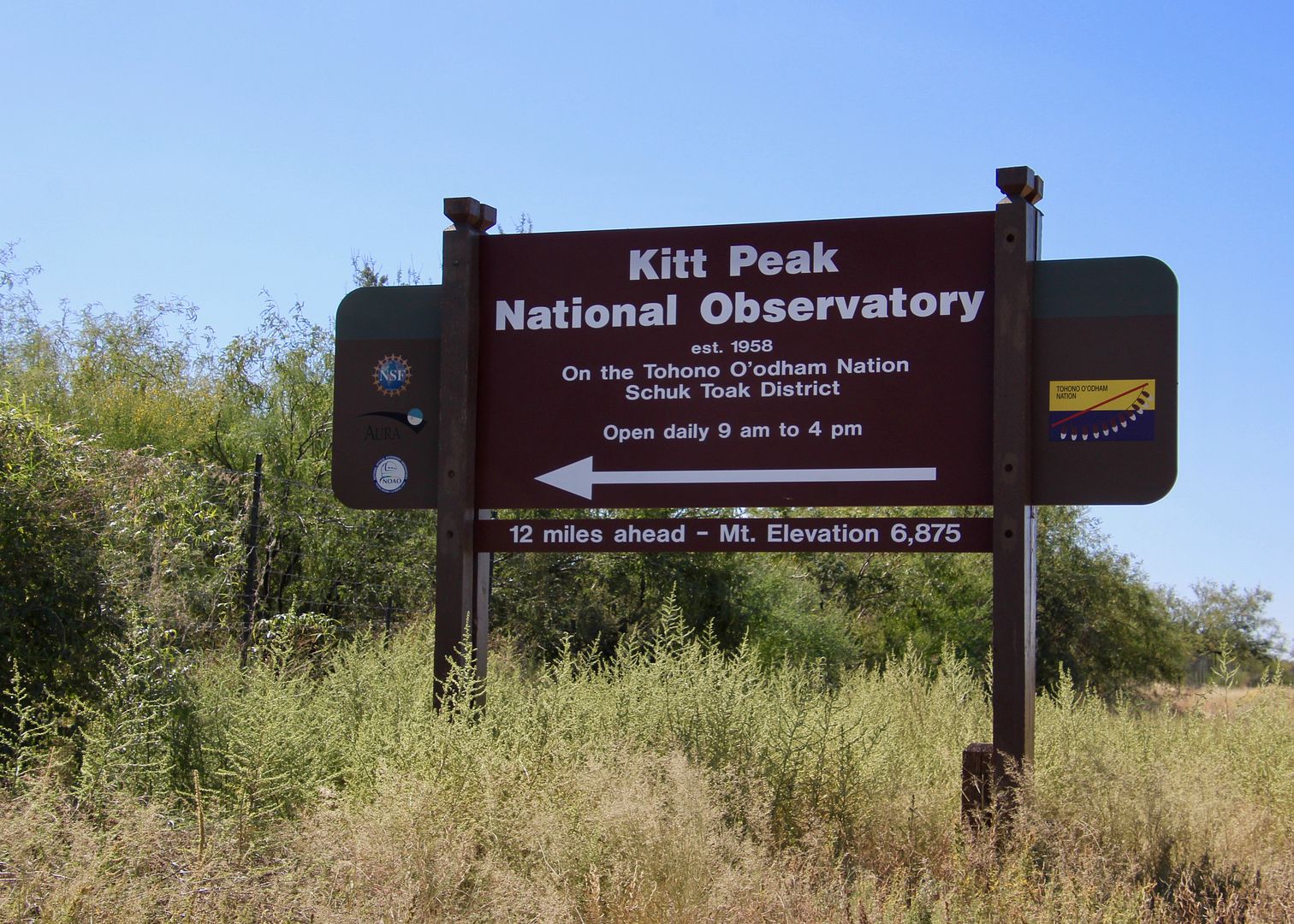
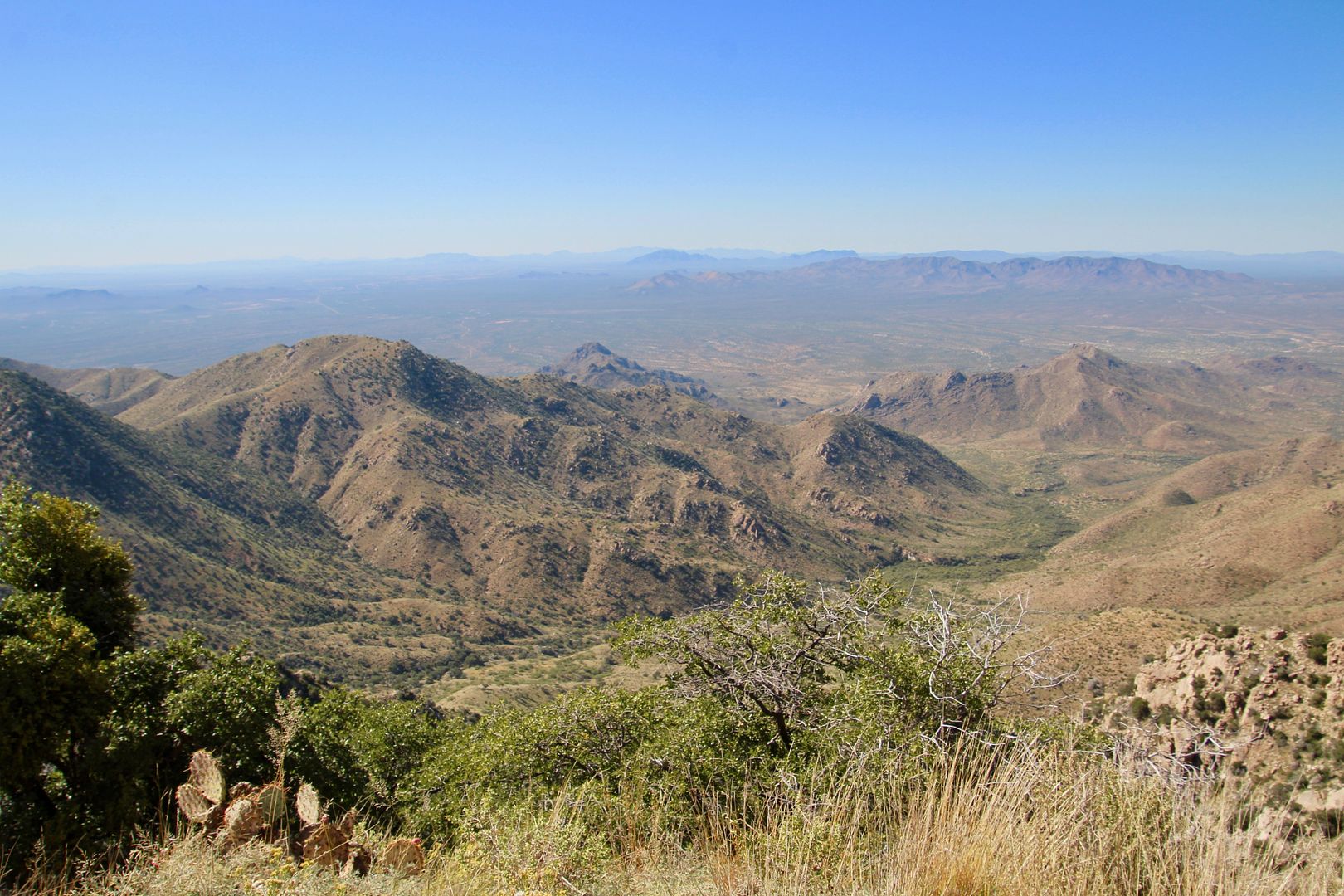
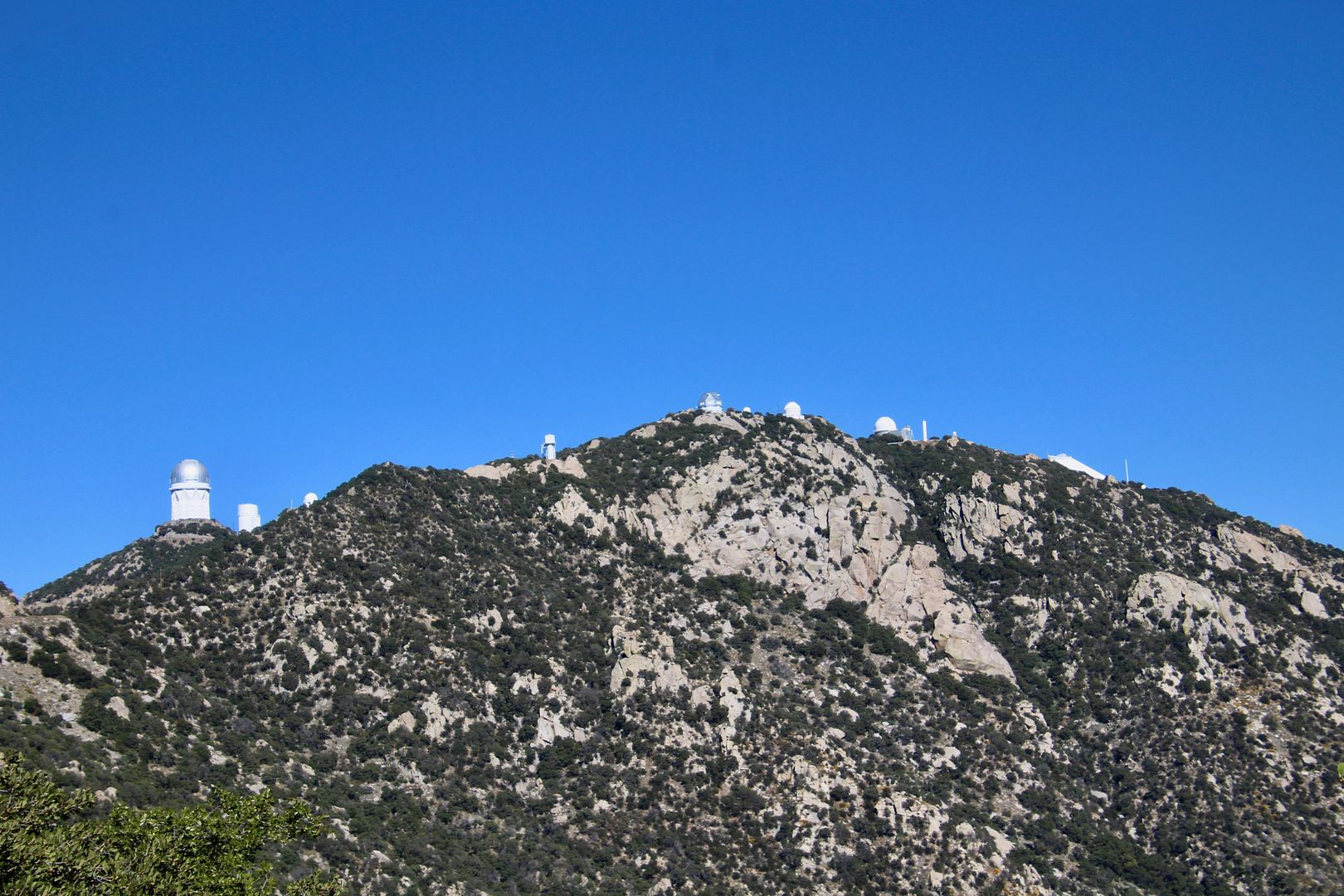

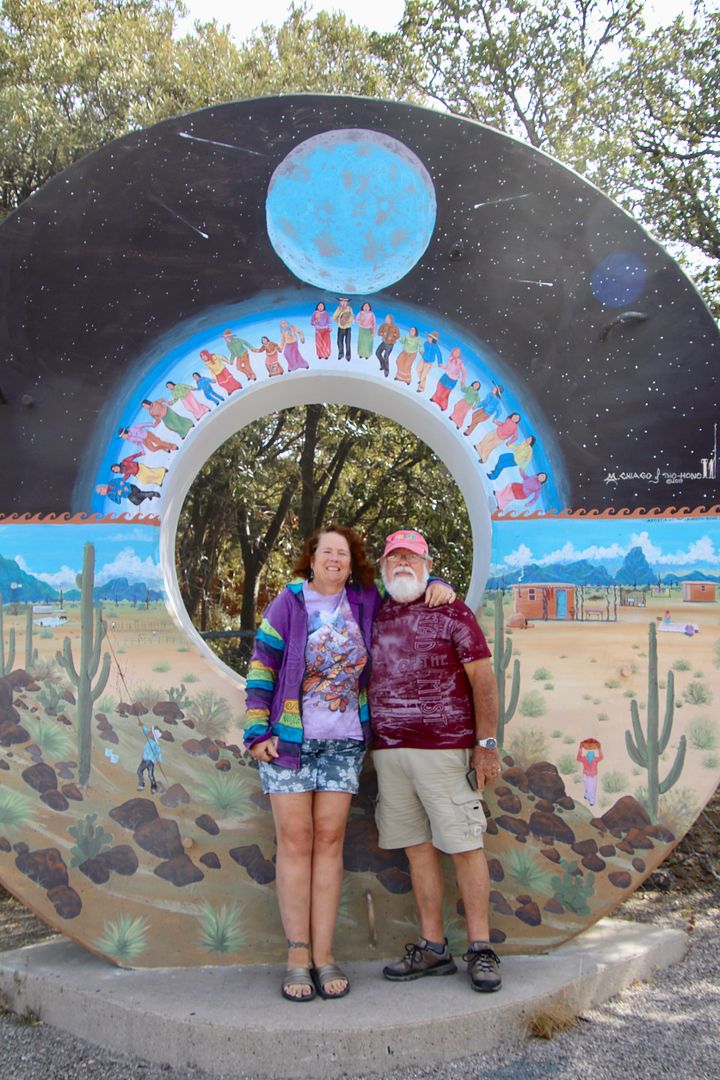
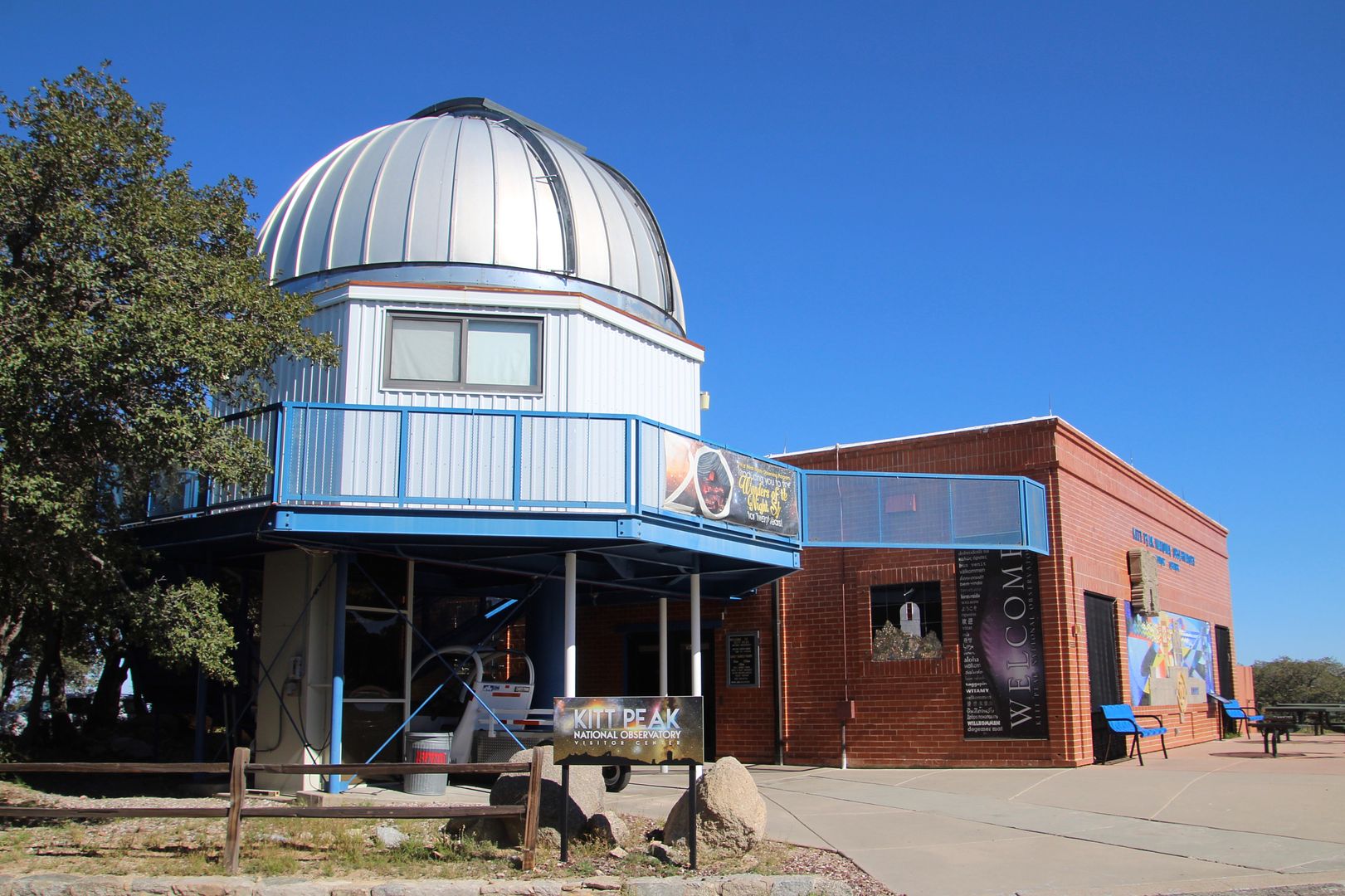
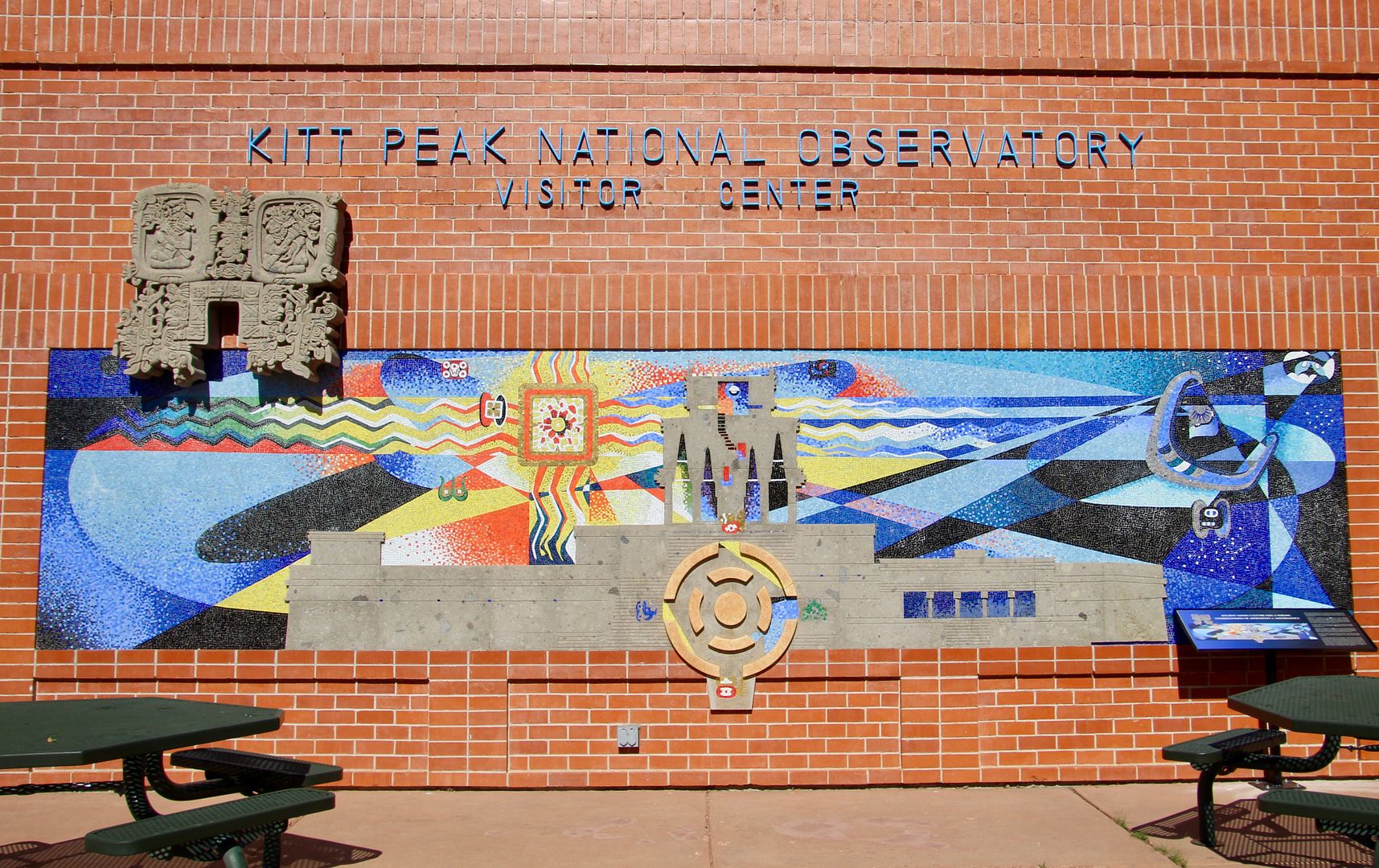
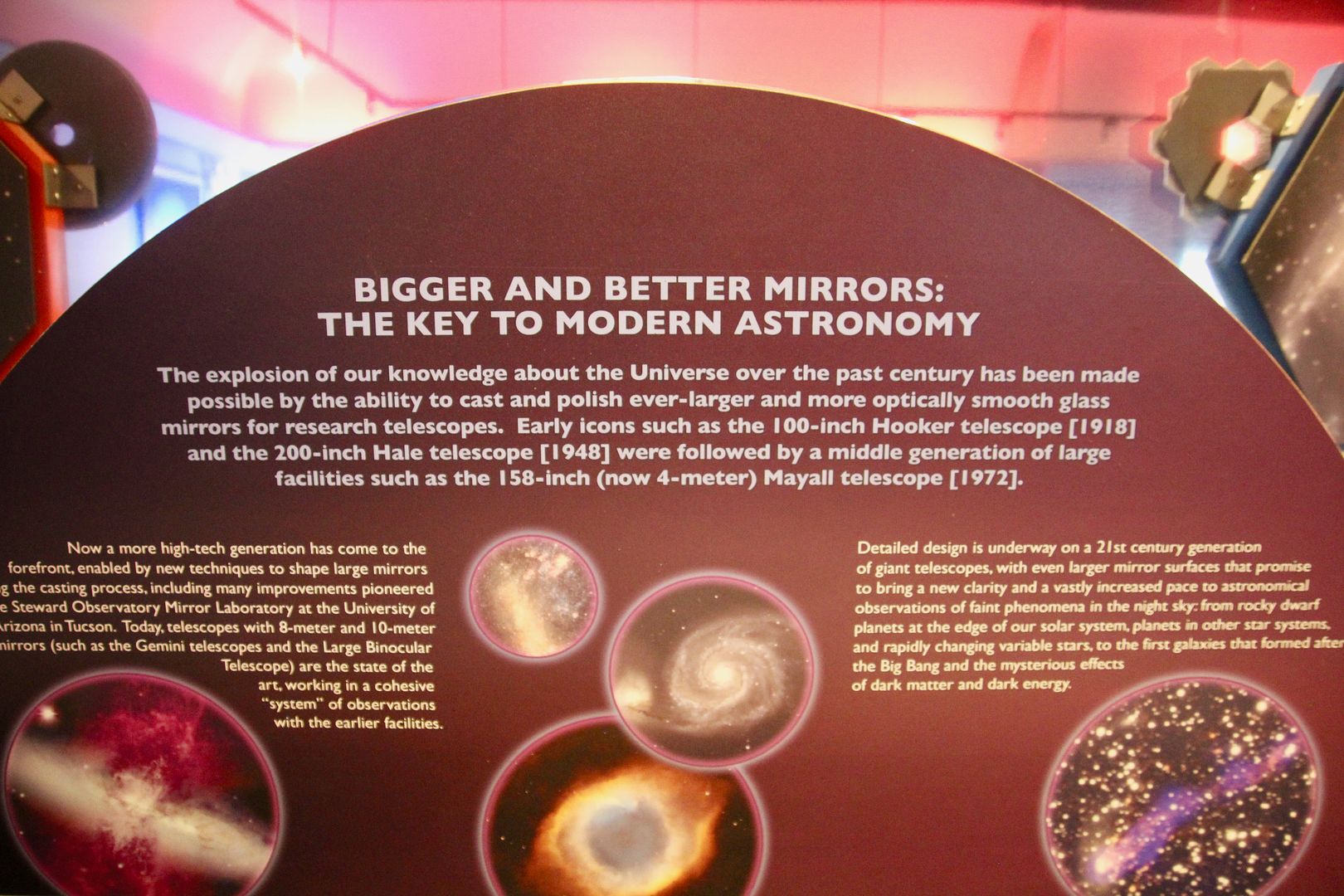
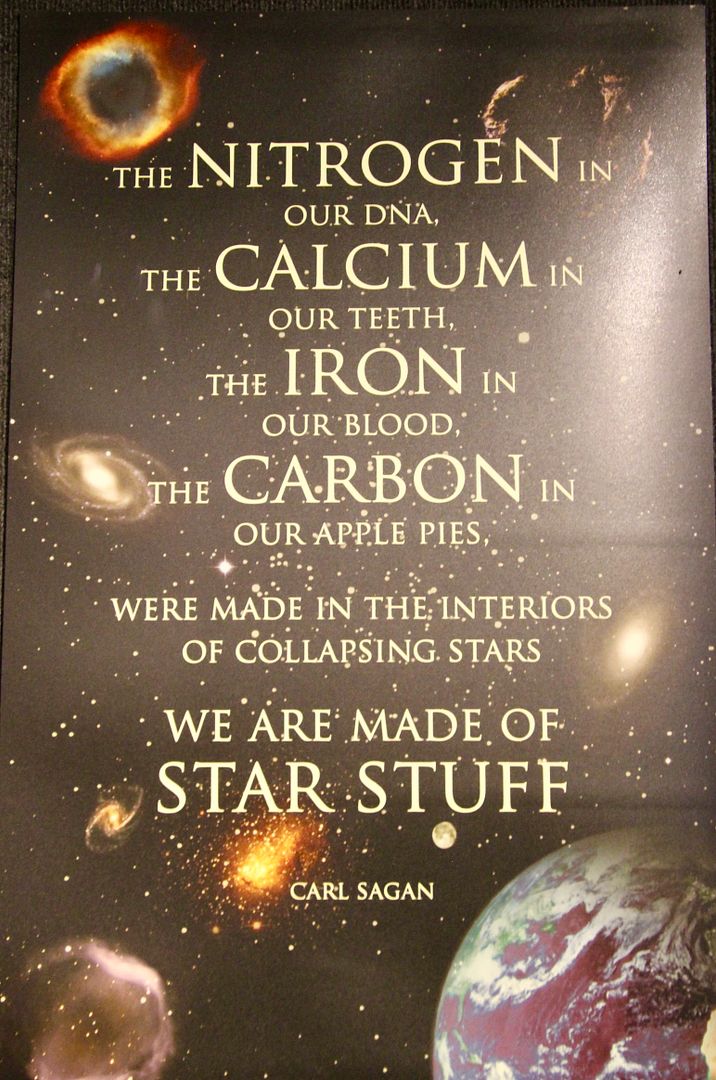

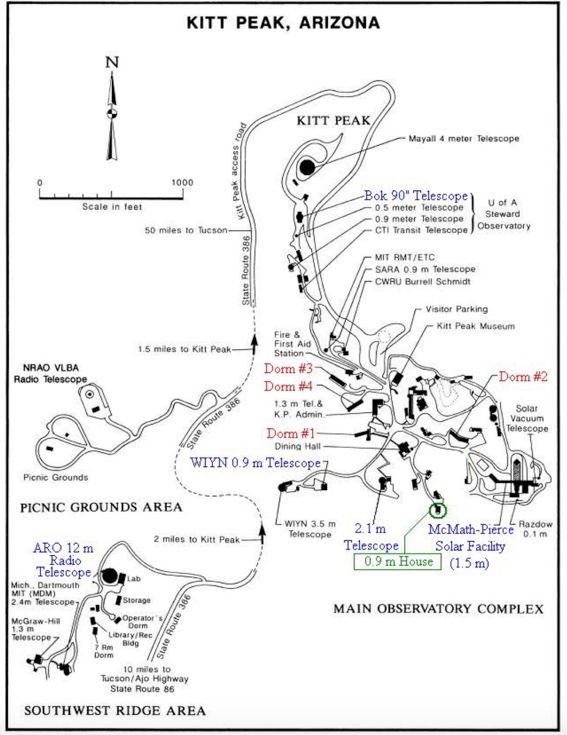

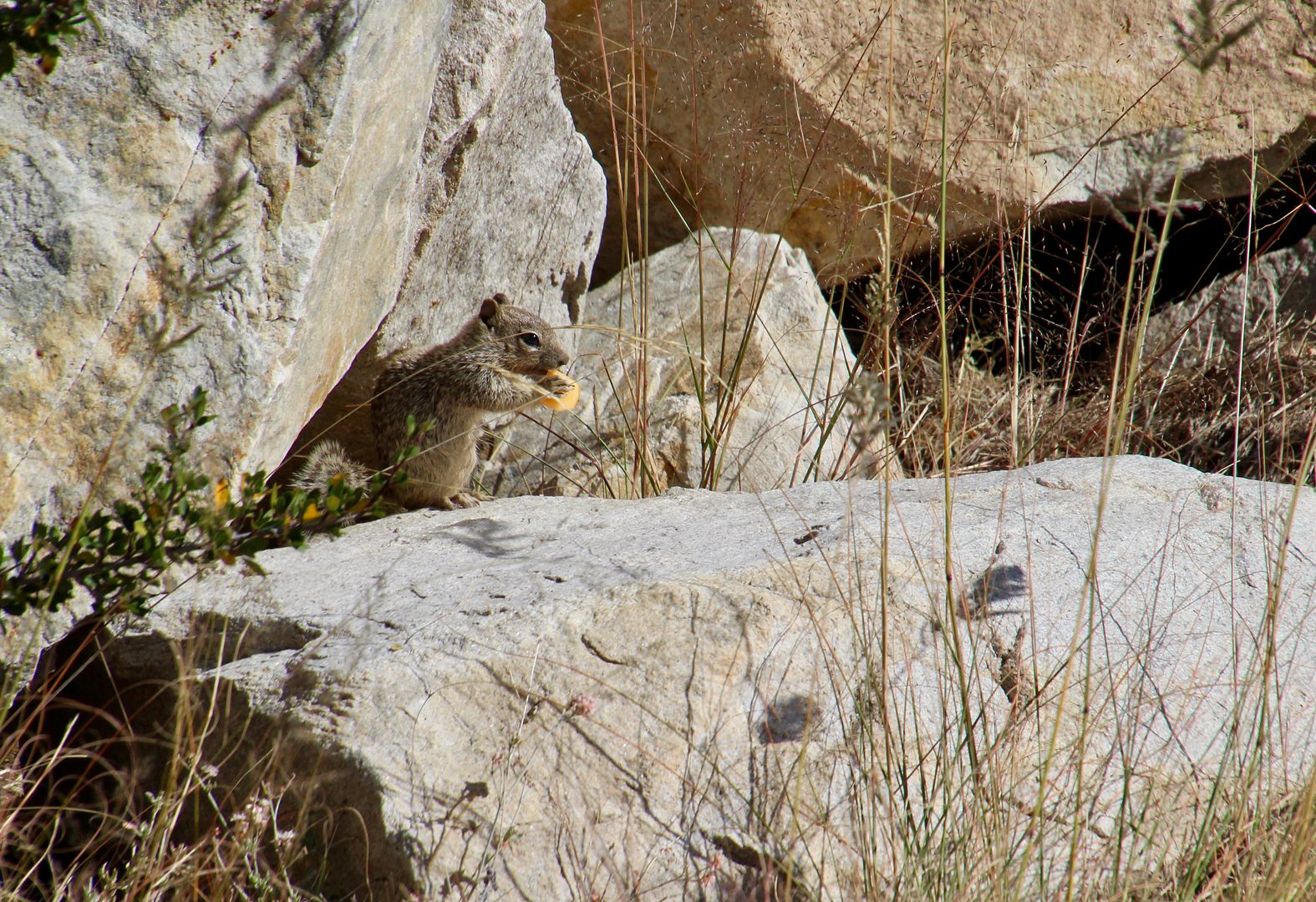
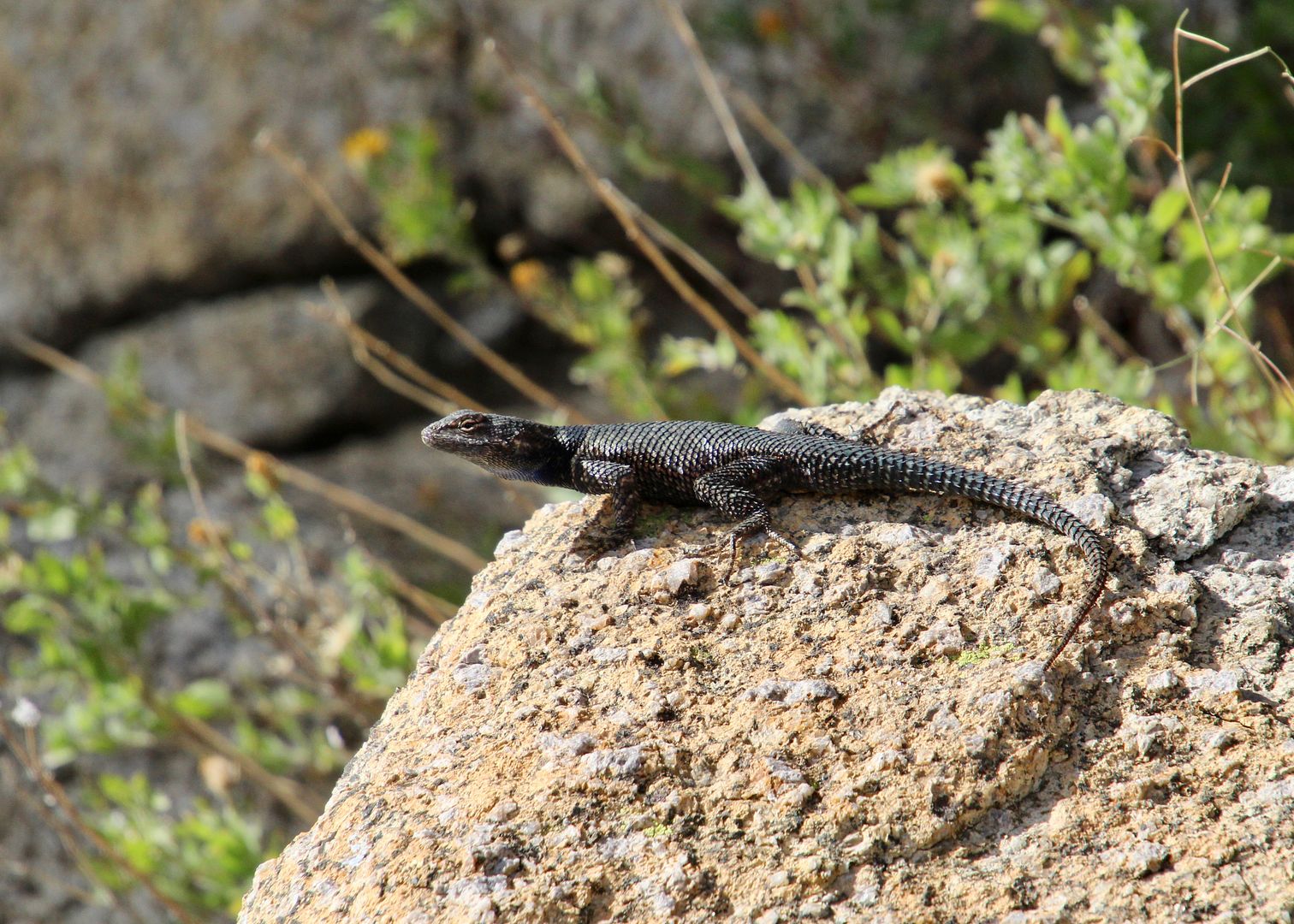

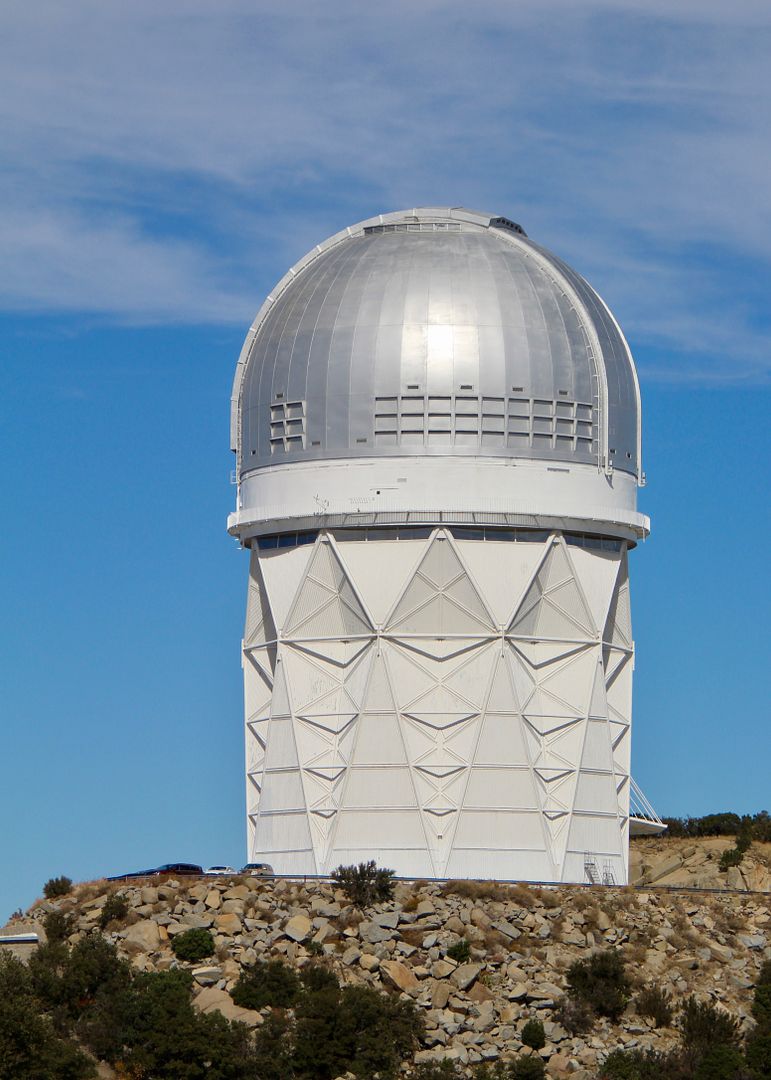
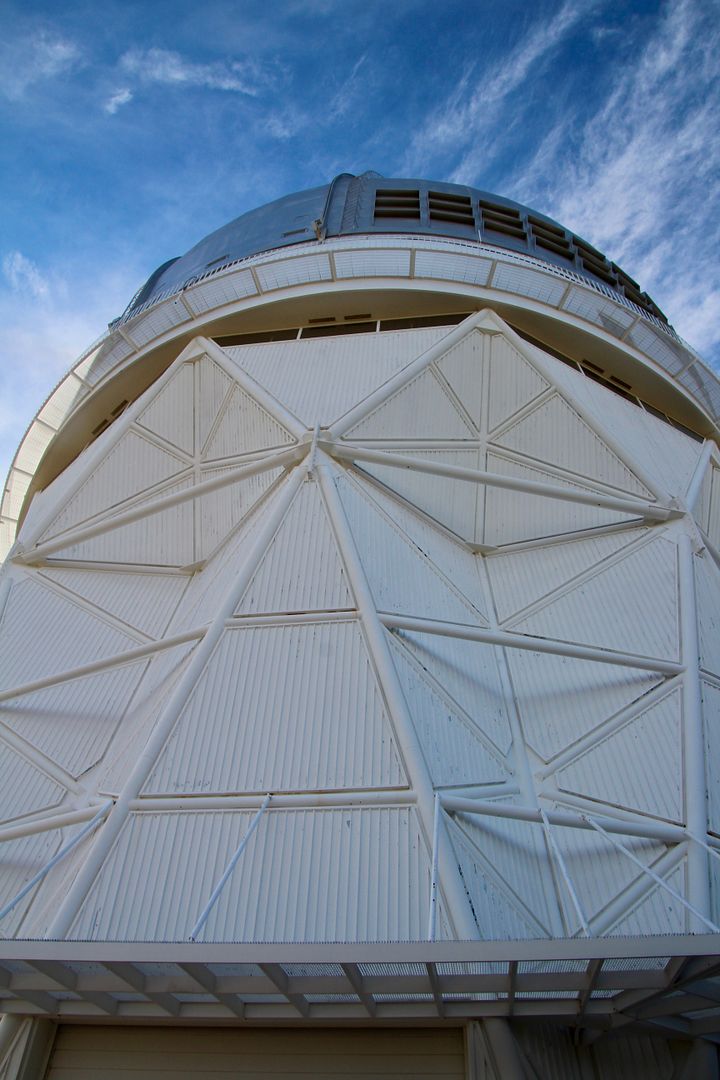
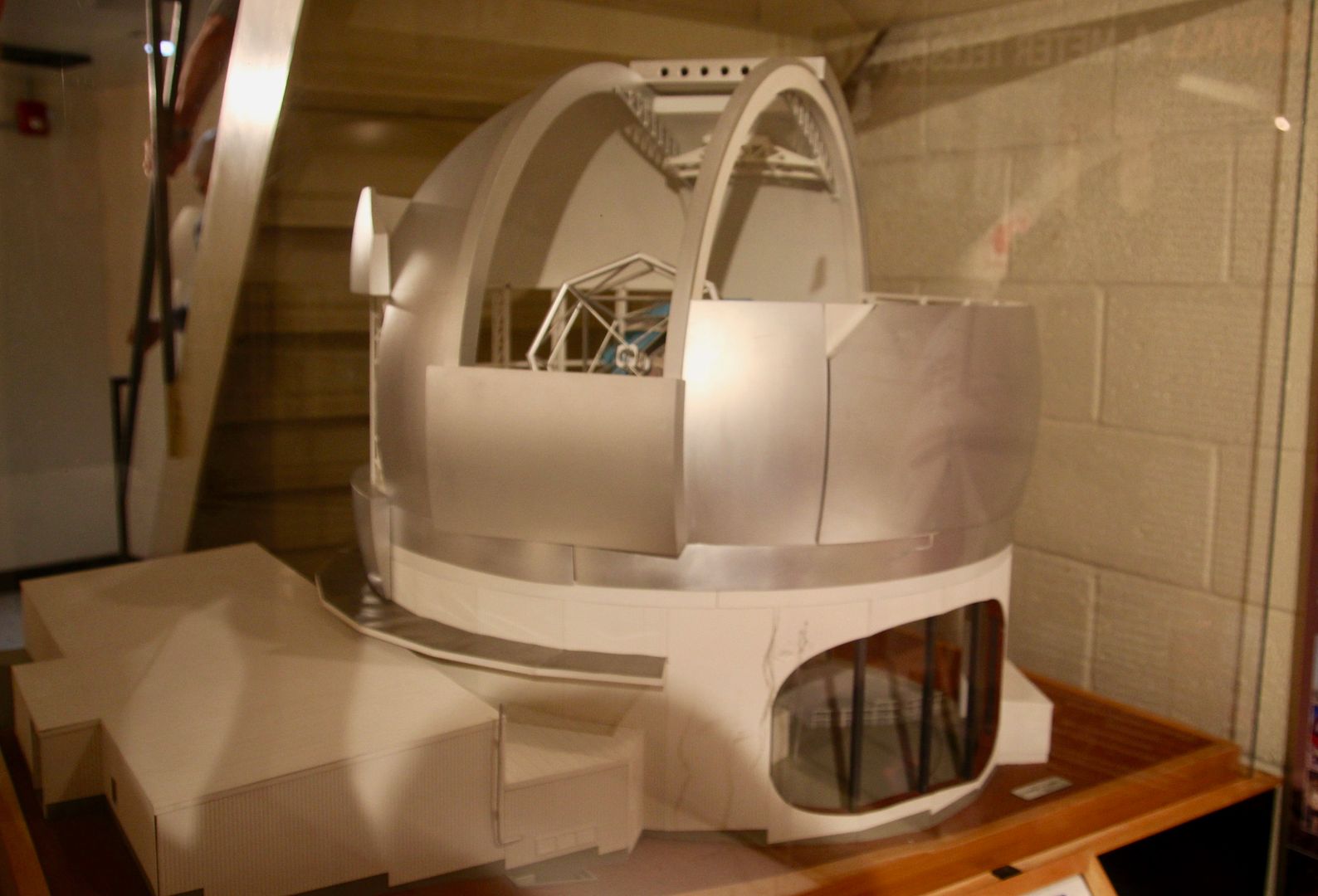


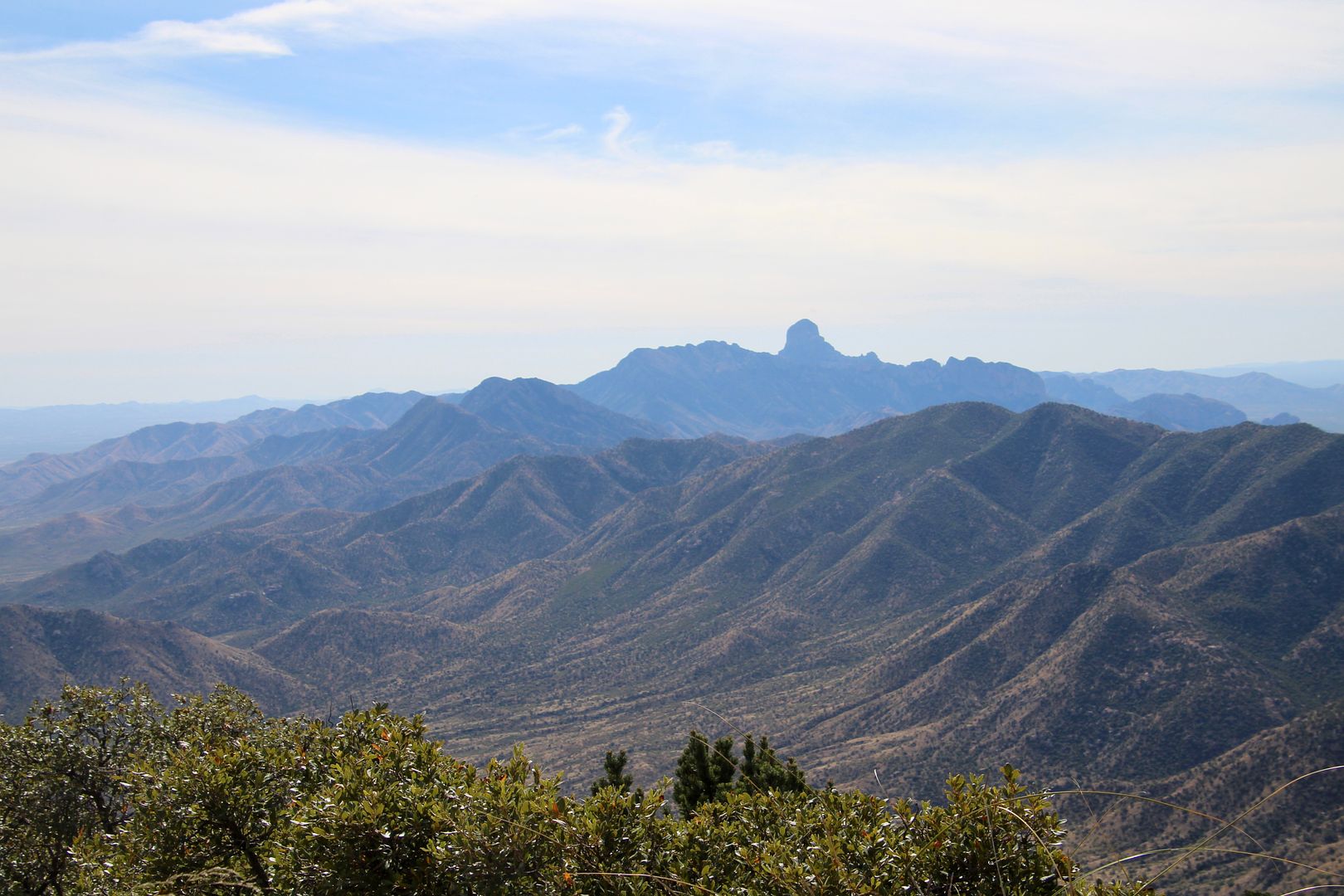
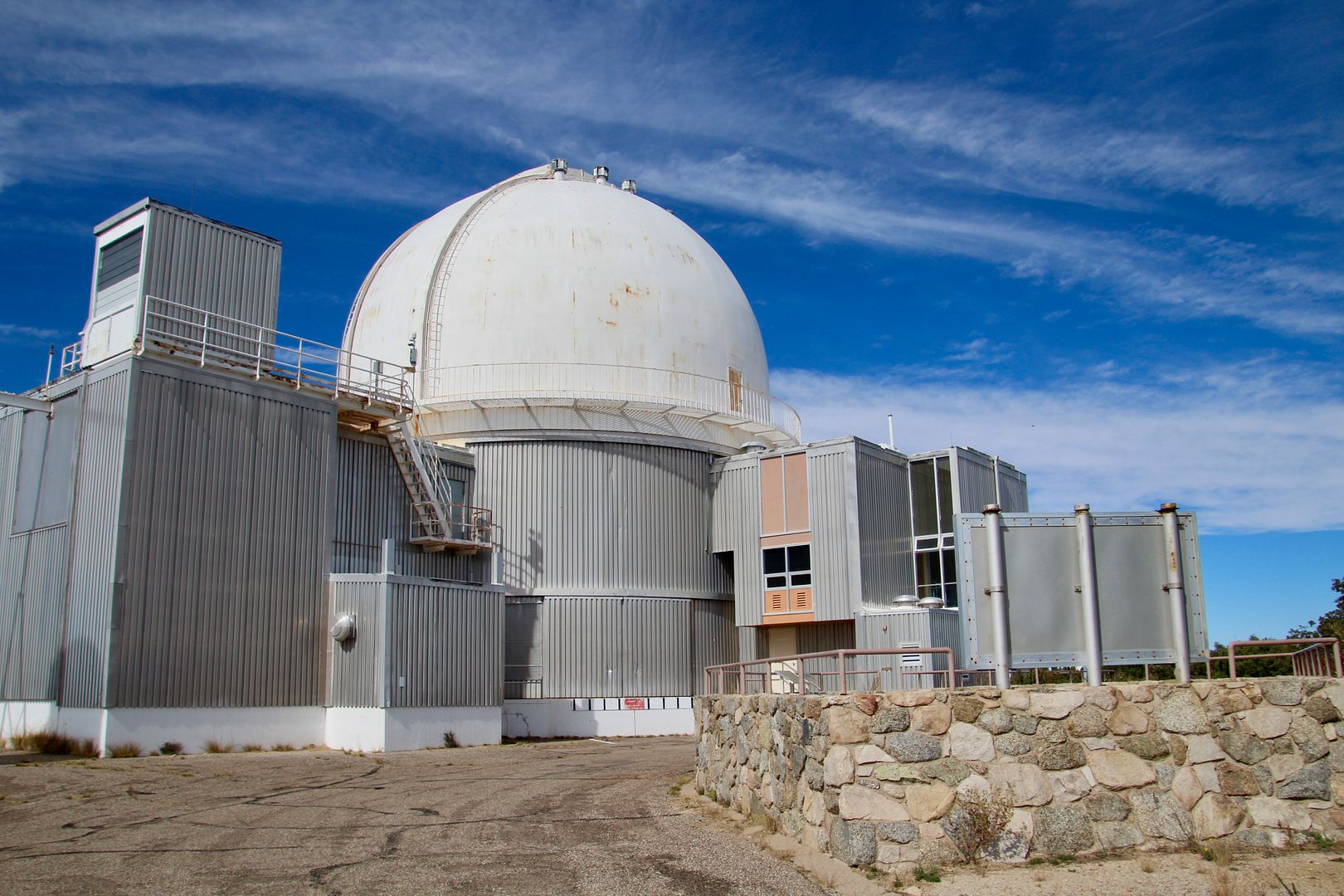
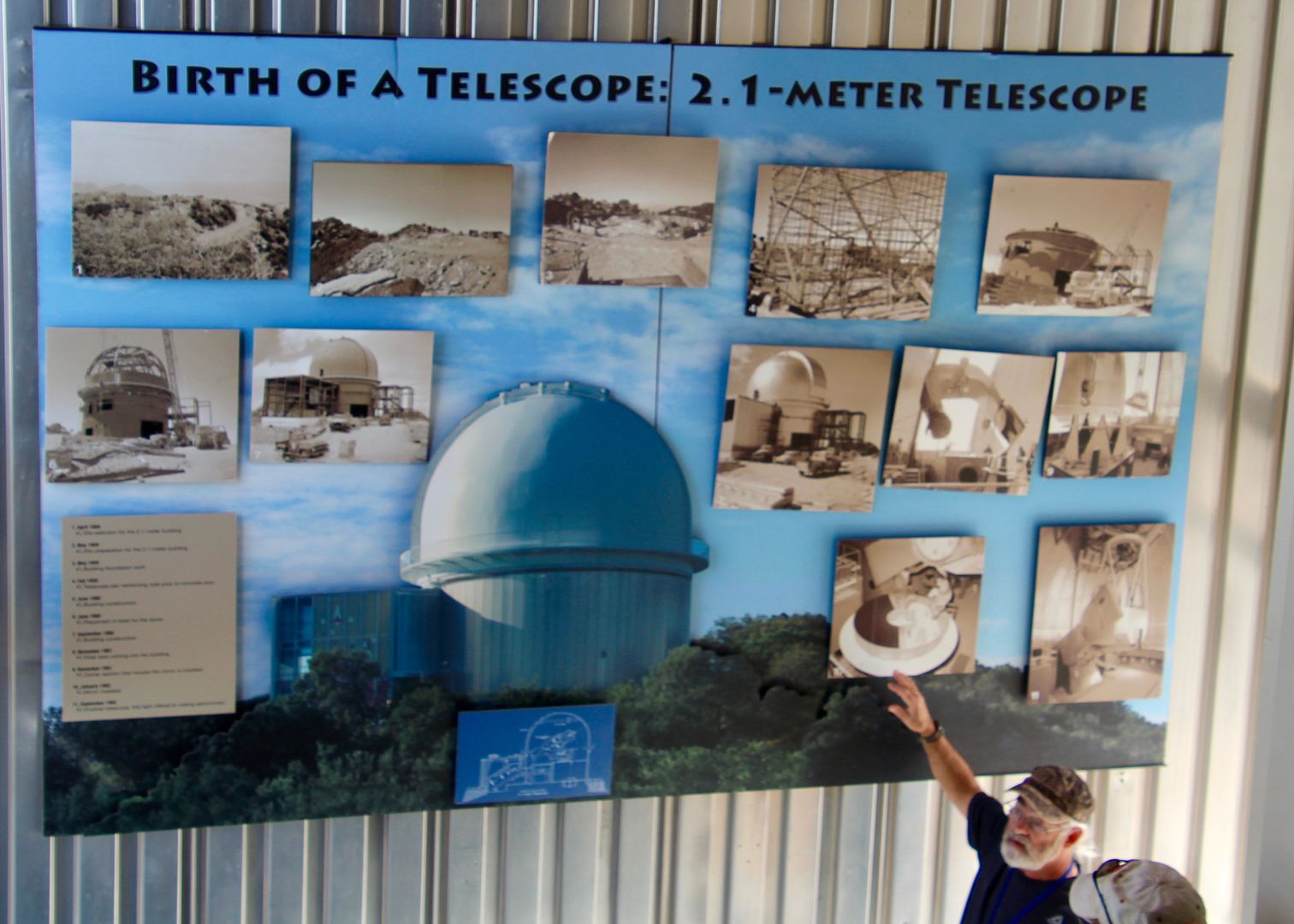
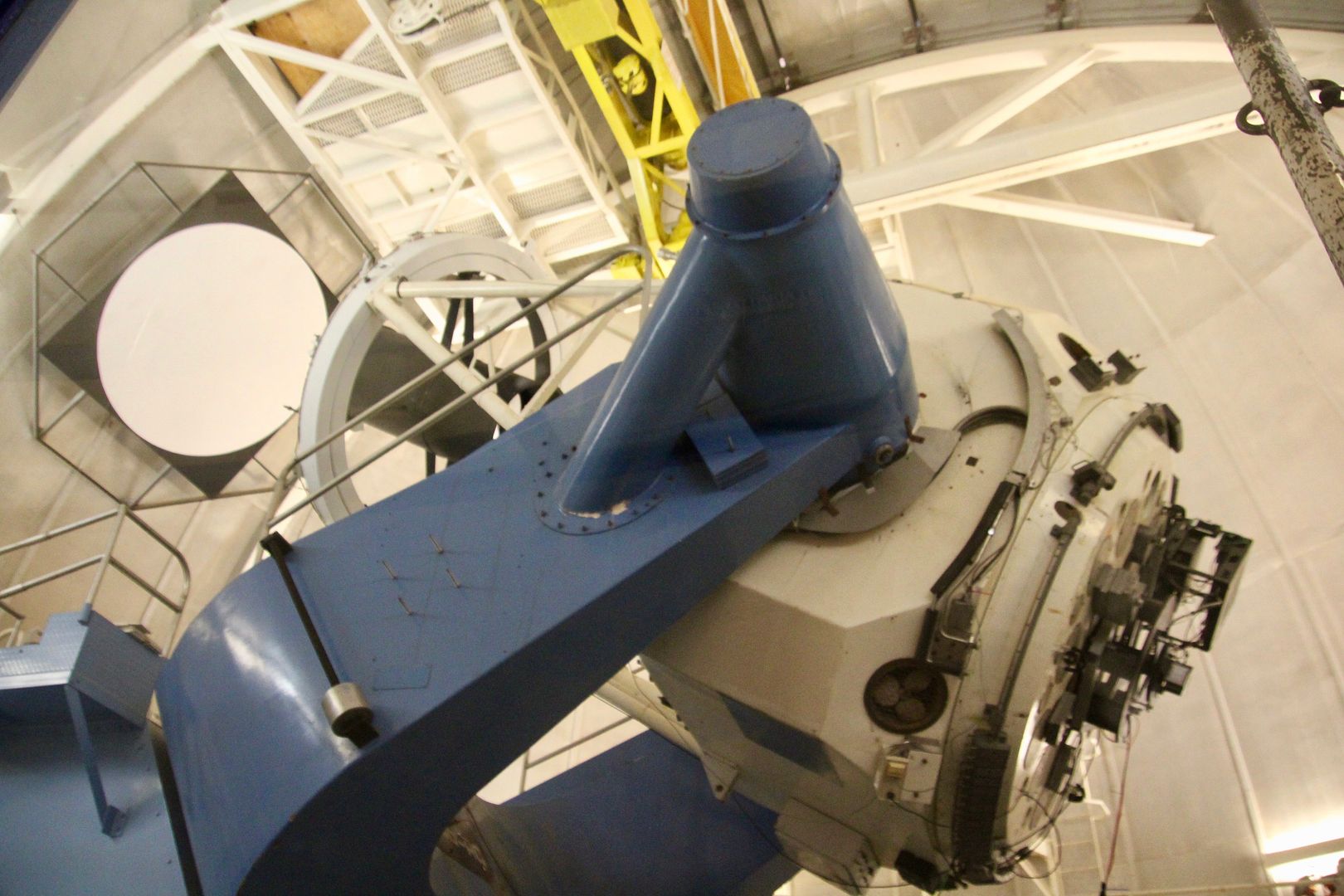
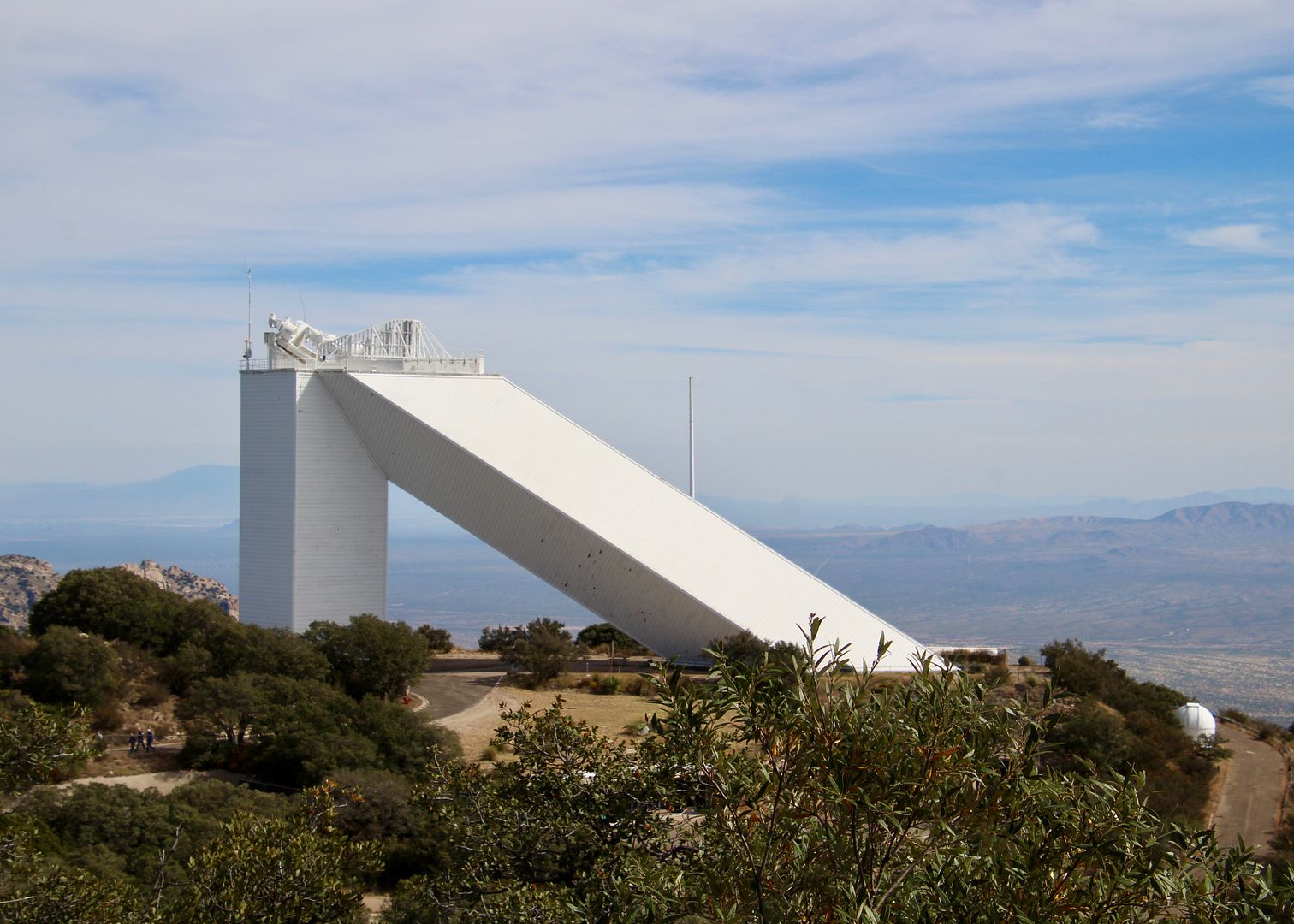
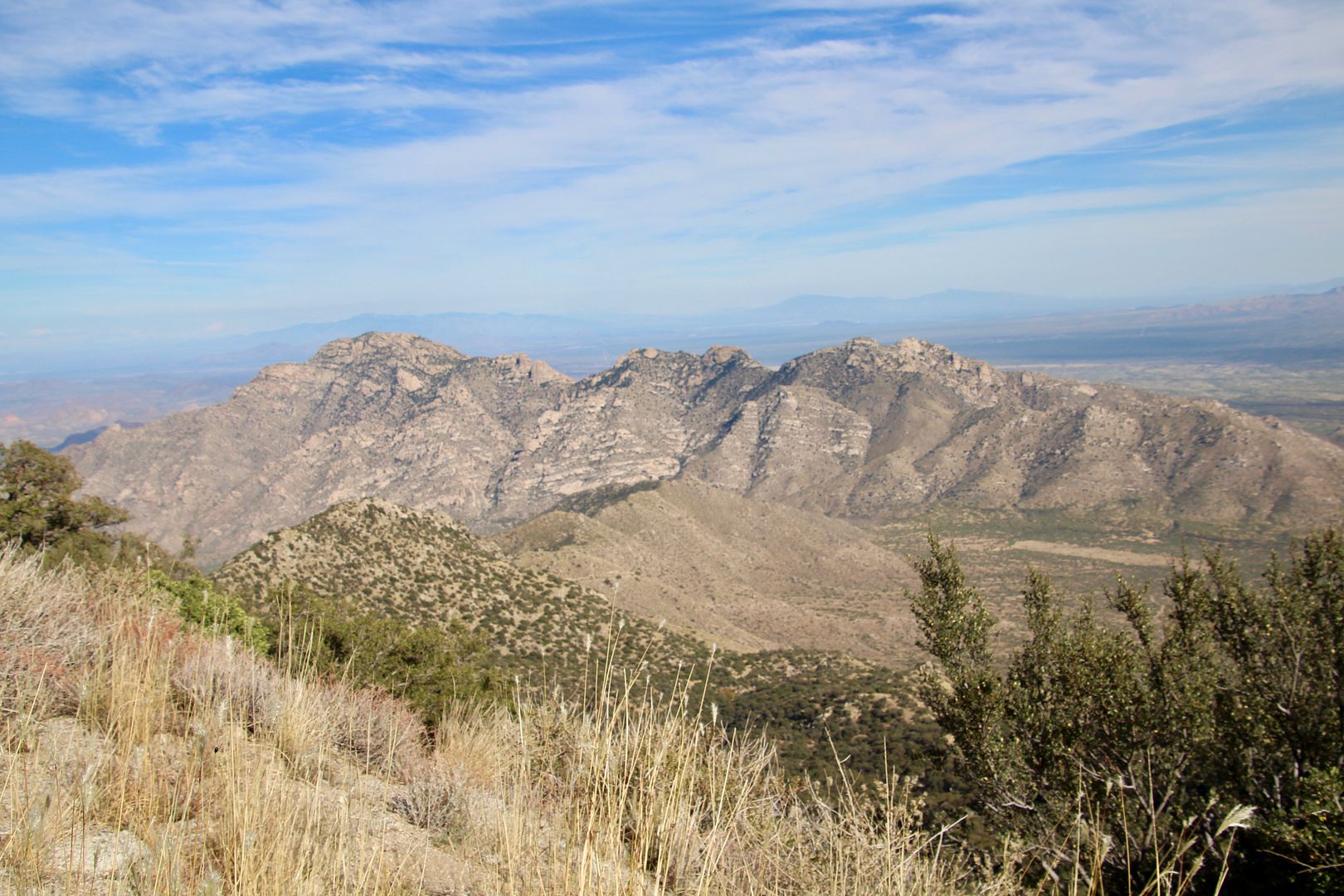
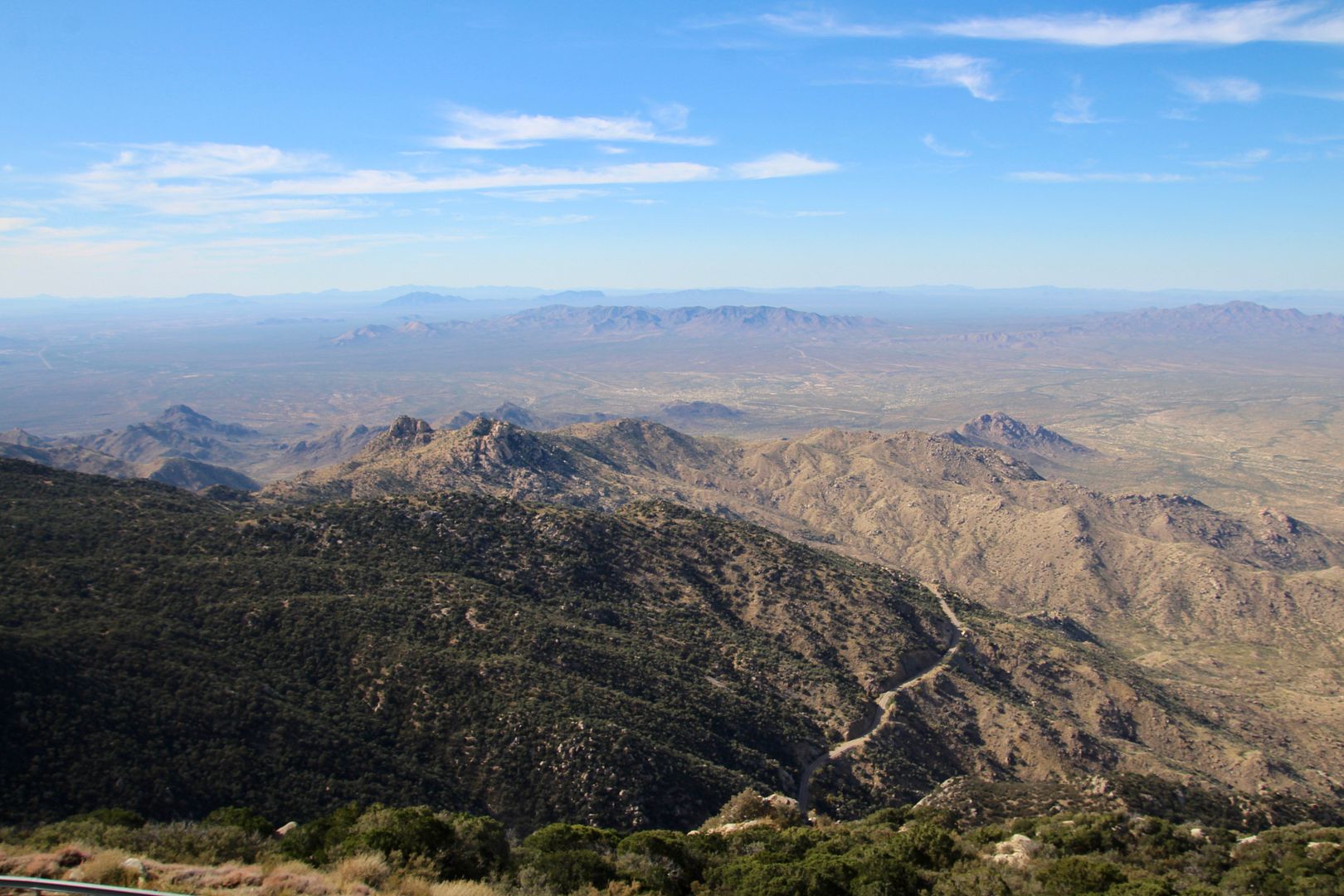
No comments:
Post a Comment